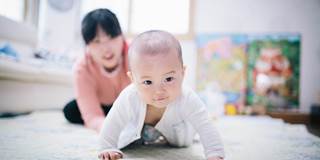South Korea is facing major demographic challenges, rooted in an ultra-low fertility rate. With the population shrinking and aging, the government is trying to boost fertility, but it isn't going nearly far enough.
SEOUL – South Korea is facing major demographic challenges. The total fertility rate (the number of children per woman), at 1.24, is one of the lowest in the world, and well below the level – 2.1 children per woman – needed to sustain a population without immigration. As a result, the population is aging fast, and the government, despite its best efforts, seems to have no answer.
A low birthrate is common in industrialized countries. Before South Korea’s economic boom – a time when having more children was viewed as a source of security in old age – the fertility rate was much higher, averaging more than six until 1960. But, as South Korea’s economy advanced, child-rearing costs rose, and female labor-force participation increased, the fertility rate declined dramatically, dropping below two in the 1980s.
At first, falling fertility rates were an economic blessing, as households saved more and invested in children’s development. In 2015, the college enrollment rate for women hit 81%, compared to just 6% in 1980. But the decline of the prime working-age population has lately been undercutting economic growth, and threatens to place excessive pressure on the public pension system down the road.

SEOUL – South Korea is facing major demographic challenges. The total fertility rate (the number of children per woman), at 1.24, is one of the lowest in the world, and well below the level – 2.1 children per woman – needed to sustain a population without immigration. As a result, the population is aging fast, and the government, despite its best efforts, seems to have no answer.
A low birthrate is common in industrialized countries. Before South Korea’s economic boom – a time when having more children was viewed as a source of security in old age – the fertility rate was much higher, averaging more than six until 1960. But, as South Korea’s economy advanced, child-rearing costs rose, and female labor-force participation increased, the fertility rate declined dramatically, dropping below two in the 1980s.
At first, falling fertility rates were an economic blessing, as households saved more and invested in children’s development. In 2015, the college enrollment rate for women hit 81%, compared to just 6% in 1980. But the decline of the prime working-age population has lately been undercutting economic growth, and threatens to place excessive pressure on the public pension system down the road.